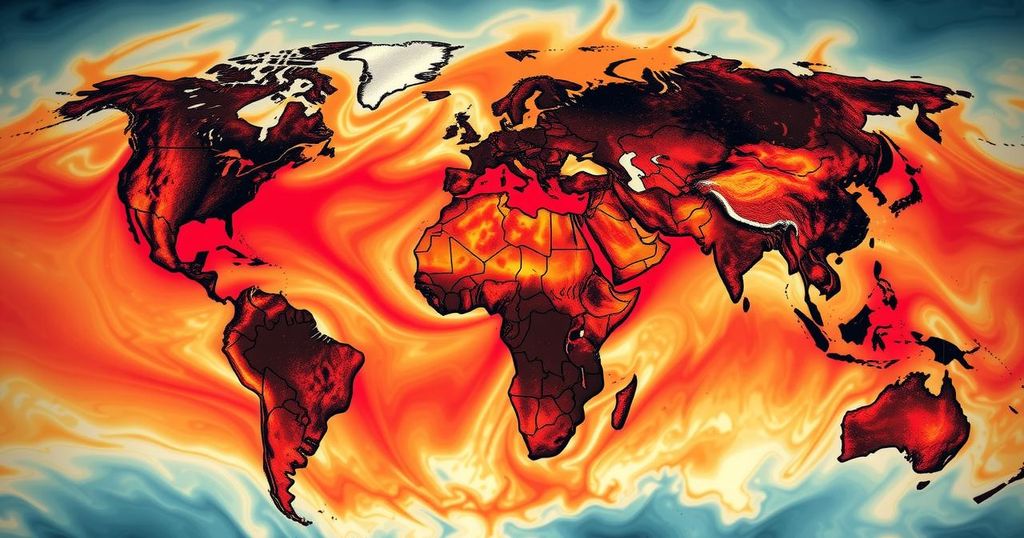In 2024, global temperatures exceeded 1.5 degrees Celsius above pre-industrial levels for the first time, with significant implications for climate policy and the environment. The year has been noted for the warmest recorded monthly averages, and storm frequency and intensity have heightened across the globe. Carbon dioxide concentrations hit new highs, further indicating the urgency needed to address climate change effects.
In 2024, the world recorded its first full year with global temperatures surpassing 1.5 degrees Celsius above pre-industrial levels, as confirmed by the European Union’s Copernicus Climate Change Service (C3S). This unprecedented heat is attributed to escalating climate change, leading to alarming temperatures that exceed historical records. Every month in 2024 marked either the warmest or the second-warmest on record. The planet’s average temperature rose to 1.6 degrees Celsius above the baseline set from 1850 to 1900, marking a significant increase tied to human activities that emit greenhouse gases.
The year 2024 is noted as the hottest recorded year, and each of the last ten years has ranked among the warmest. The British Met Office reported a slightly lower average temperature figure of 1.53 degrees Celsius for the year. As nations pledged under the 2015 Paris Agreement, there is an urgent need to limit temperature increases to mitigate risk. Notably, the record-breaking temperatures do not violate the long-term Paris Agreement target but signal urgent action against rising emissions and ongoing heat-related disasters.
Despite potential solutions to diminish rising temperatures, political commitment has lagged in some regions, prompting concerns from climate experts. For instance, Chukwumerije Okereke from the University of Bristol emphasized the need for political figures to recognize the significance of the 1.5 degrees milestone. Disaster events, including catastrophic wildfires and flooding across various continents, exemplify the immediate impacts of climate change manifesting globally.
Laboratory measures conducted revealed that atmospheric carbon dioxide levels hit 422 parts per million, further intensifying global warming. These findings have raised predictions that 2025 might rank among the top three hottest years, with climate changes partially catalyzed by the El Nino weather phenomenon. Without drastic cuts to emissions, scientists warn that the trajectory toward a warming planet remains perilous.
The topic of climate change has gained significant attention in recent years, primarily due to the alarming rise in global temperatures attributed to human activities, particularly the burning of fossil fuels. The Paris Agreement established a framework to limit global warming to well below 2 degrees Celsius, aspiring to constrain the increase to 1.5 degrees Celsius. The Copernicus Climate Change Service regularly monitors and reports on climate trends and global temperature changes, providing essential data for scientists and policymakers to understand the ongoing impacts of climate change.
In summary, 2024 marks a significant milestone with global temperatures exceeding 1.5 degrees Celsius, highlighting the urgency and critical need for immediate action to curb greenhouse gas emissions. Despite international commitments under the Paris Agreement, increasing temperatures and extreme weather events present a dire warning regarding the effects of climate change. The global community must prioritize efforts to combat emissions to avert disastrous consequences and alter the current trajectory of warming.
Original Source: www.straitstimes.com






